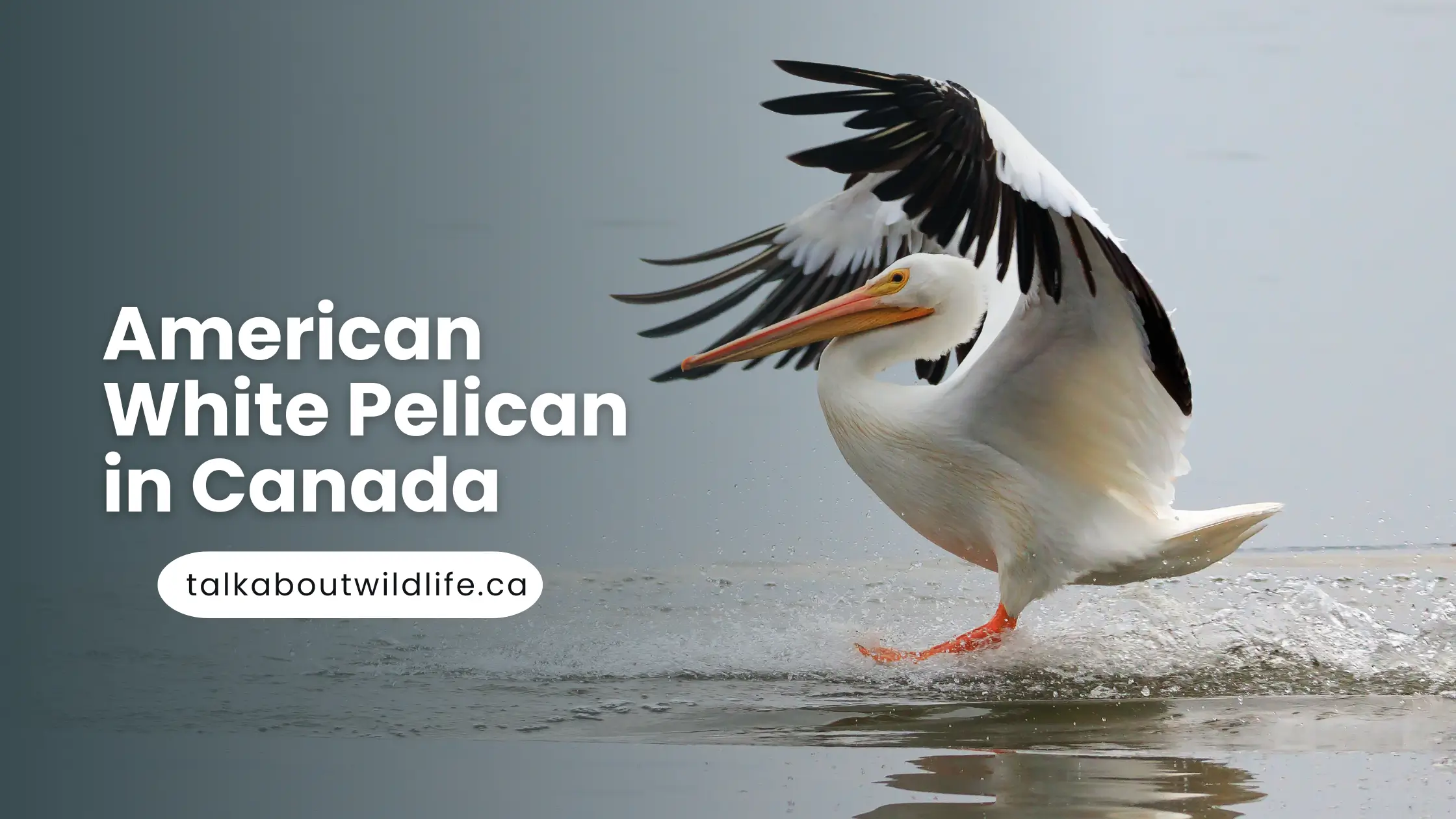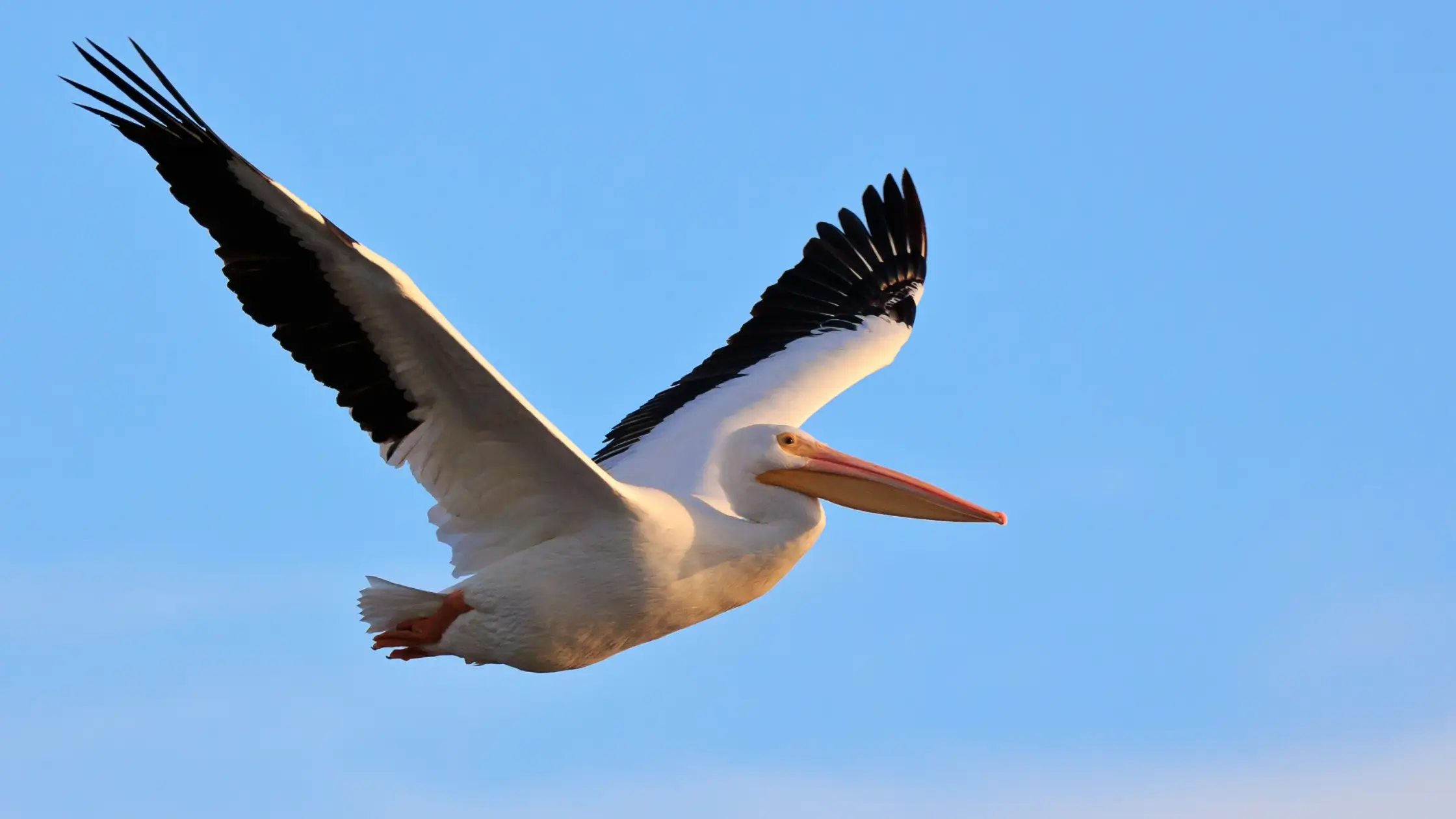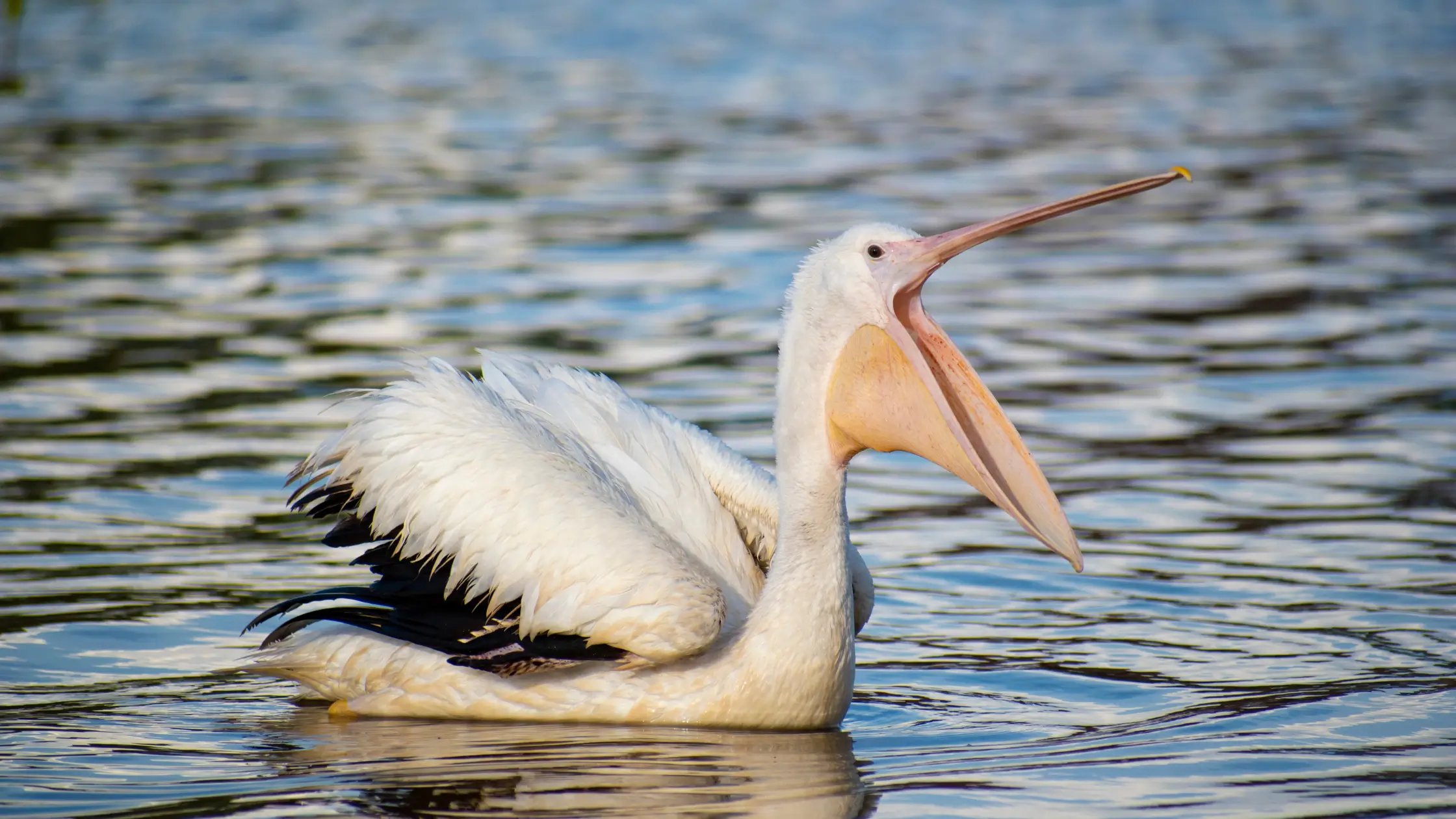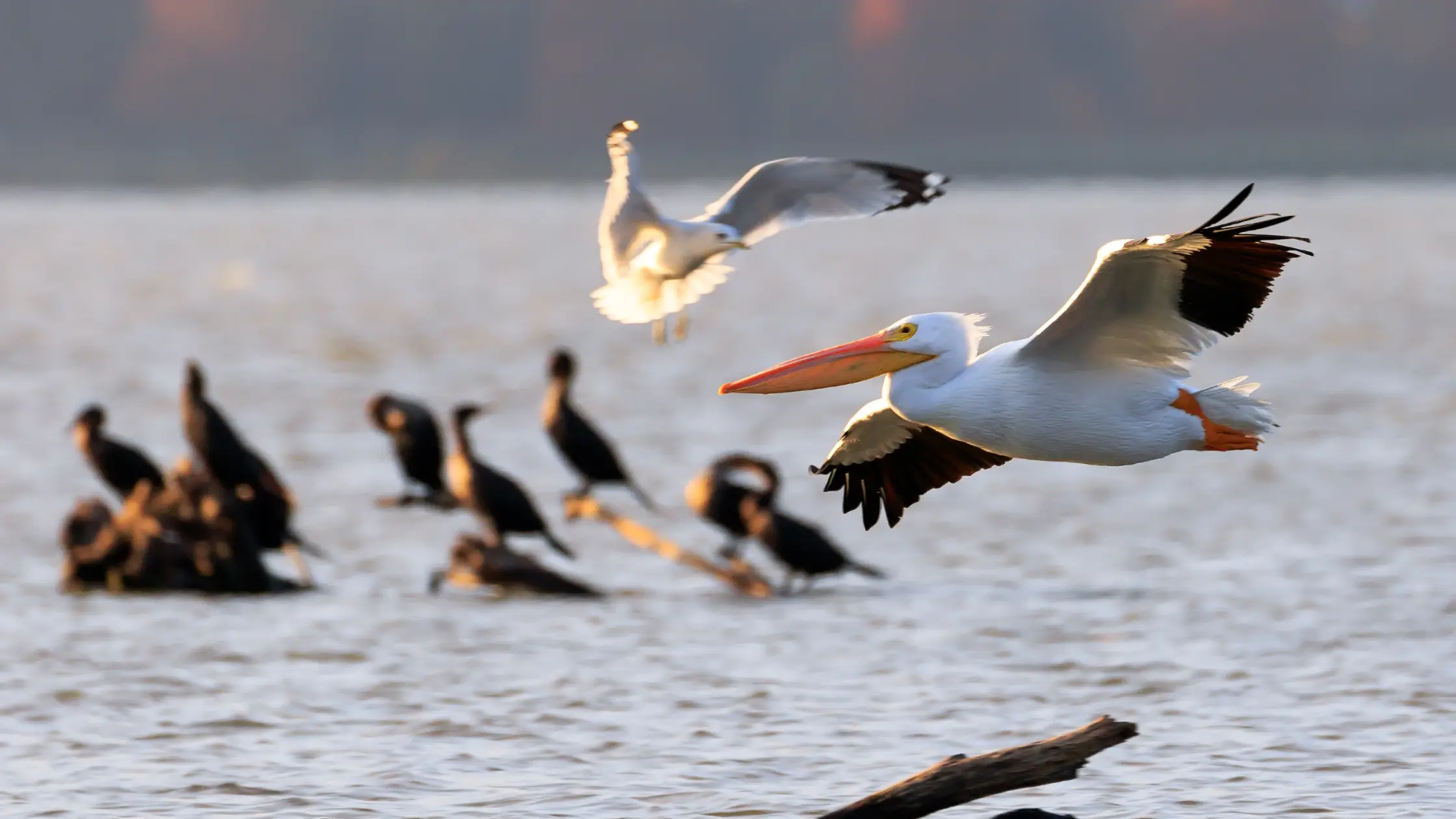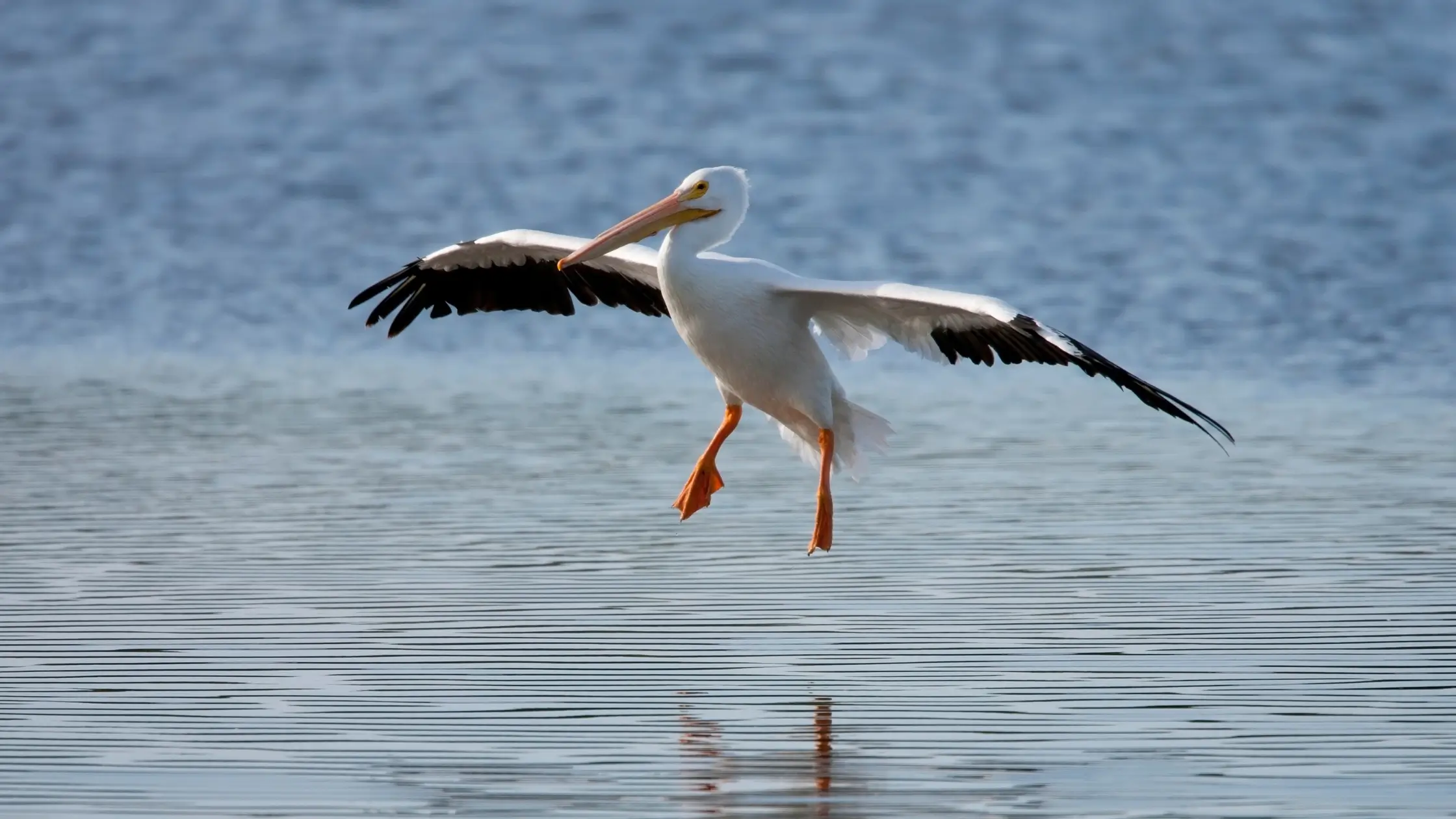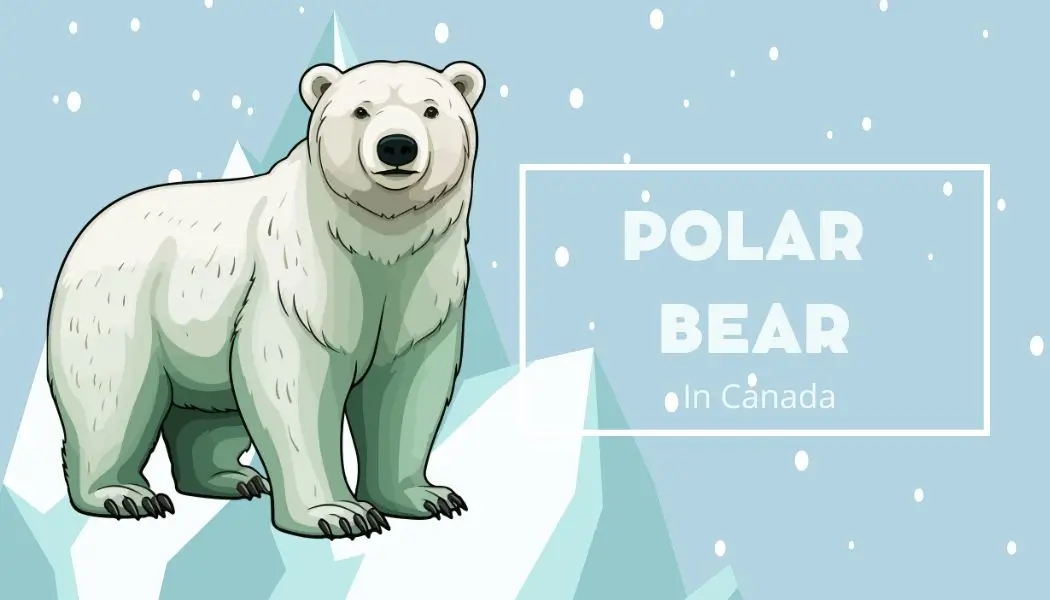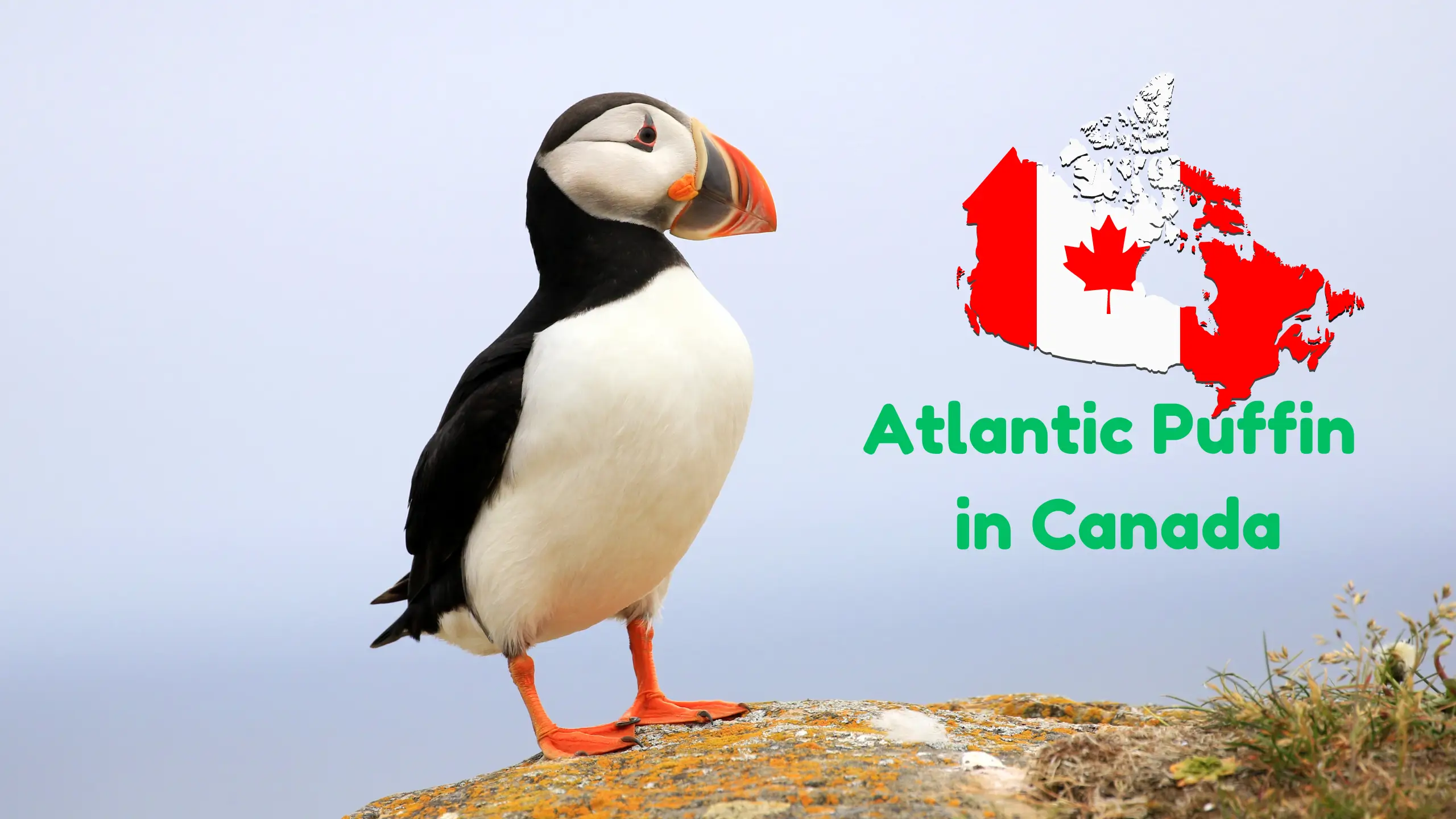The American White Pelican is a big white bird with a long orange beak. These birds often float smoothly over lakes and rivers looking for fish and capture it with their big beaks. White Pelicans like to be with other Pelicans. These birds travel far distances in warm weather and when it gets cold, they fly to warmer places.
The American White Pelican is a big bird you can see in Canada. They like to be near lakes and rivers in the summer. You might spot them in central Canadian territory making Canada’s outdoors even prettier.
Physical Characteristics and Features
The following are some attractive physical features of these birds;
| Features | Relevant Information |
| Scientific Name | Pelecanus erythrorhynchos |
| Life Span | The average life span is about 12 – 14 years and can reach up to 30 years |
| Diet | Different types of small fishes, salmon, Amphibians, Salamander |
| Length | Average is about 50-70 inches |
| Average Weight | It is about 6 – 7 kg.
Males weigh about 6 kg while females weigh about 5 kg |
| Wingspan | About 3 meters |
| Habitat | Shallow islands, Coastal beaches, Lagoons, and Wet Prairies |
| Status of specie | Not Endangered |
Exceptional Facts About American White Pelicans in Canada
Below mentioned facts are unique to this bird and catch the attention of visitors in no time;
-
Seasonal Visitors
These pelicans are migratory birds, arriving in Canada during spring and leaving in fall for warmer southern regions.
-
Impressive Wingspan
The American White Pelican is one of the largest birds in Canada because of its impressively large wingspan.
-
Collaborative Fishing
Pelicans in Canada team up to push the fish into shallow water where they can catch them easily.
-
Silent Flyers
Despite their large size, American White Pelicans are surprisingly quiet when flying over landscapes.
-
Unique Bill Pouch
The pelican’s expandable throat pouch can hold up to 3 gallons of water, which it uses to scoop up fish in water.
-
Nesting Islands
These pelicans prefer to nest on remote, predator-free islands in lakes and wetlands.
-
Winter Migration
Most American White Pelicans that breed in Canada migrate to the southern United States and Mexico for the winter.
-
Provincial Symbol
This is the official bird of Minot and North Dakota, but it holds no official status in Canadian provinces despite its significance.
-
Climate Change Impact
Climate change is affecting the Canadian habitats of American White Pelicans, potentially altering their breeding patterns and migration routes.
-
Egg-Laying
Female pelicans usually lay two eggs in their nesting sites, though often only one chick survives.
Sightseeing of American White Pelican in Canada
There exist some ideal places for the sightseeing of this bird in Canada and these places provide a good visit spot for photography.
| Direction of the Country | Places Where American White Pelicans are Found |
| Eastern Side | Ontario |
| Western Side | Alberta and British Columbia |
| Central Territory | Manitoba and Saskatchewan |
Lakes in Canada Where These Birds Are Found
Following lakes and shores inhibit these unique migratory birds and give tourists a chance to take their picture;
- Delta Marsh
- Lake Winnipegosis
- Last Mountain Lake
- Quill Lakes
- Bow River
- Chilcotin Plateau lakes
- Great Slave Lake
- Lake of the Woods
Best Time to See American White Pelicans
The ideal time to see these massive birds depends on the migration patterns but here are the best months to plan a visit:
| Season | Months for Sightseeing |
| Spring and Early Summers | Late April to May |
| Summer | June to September |

